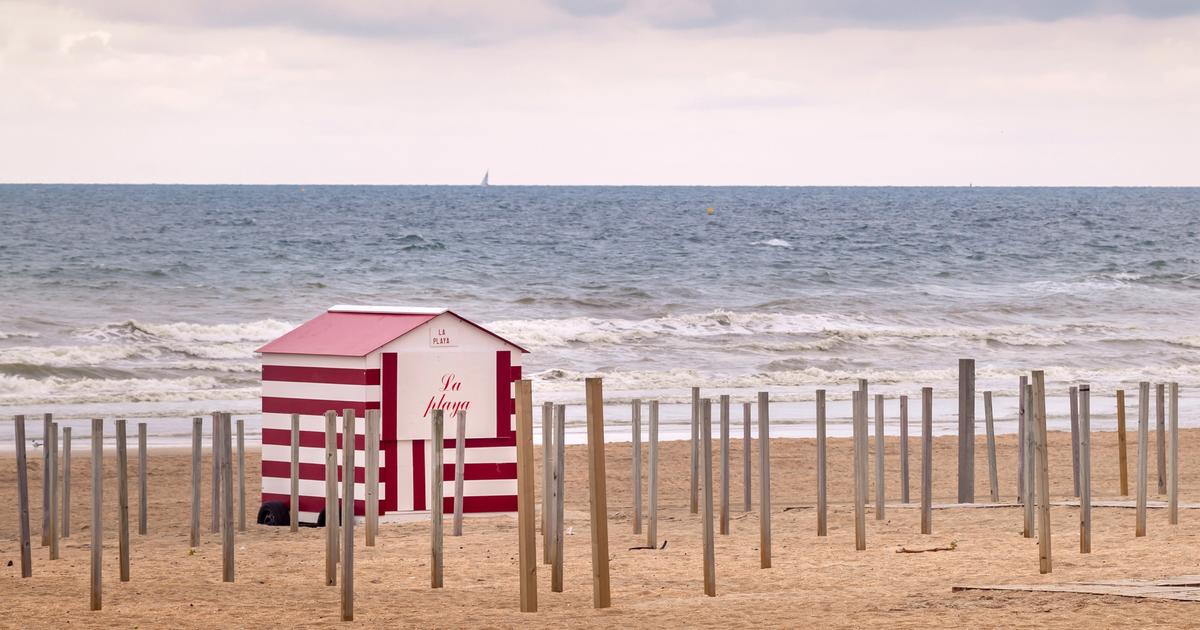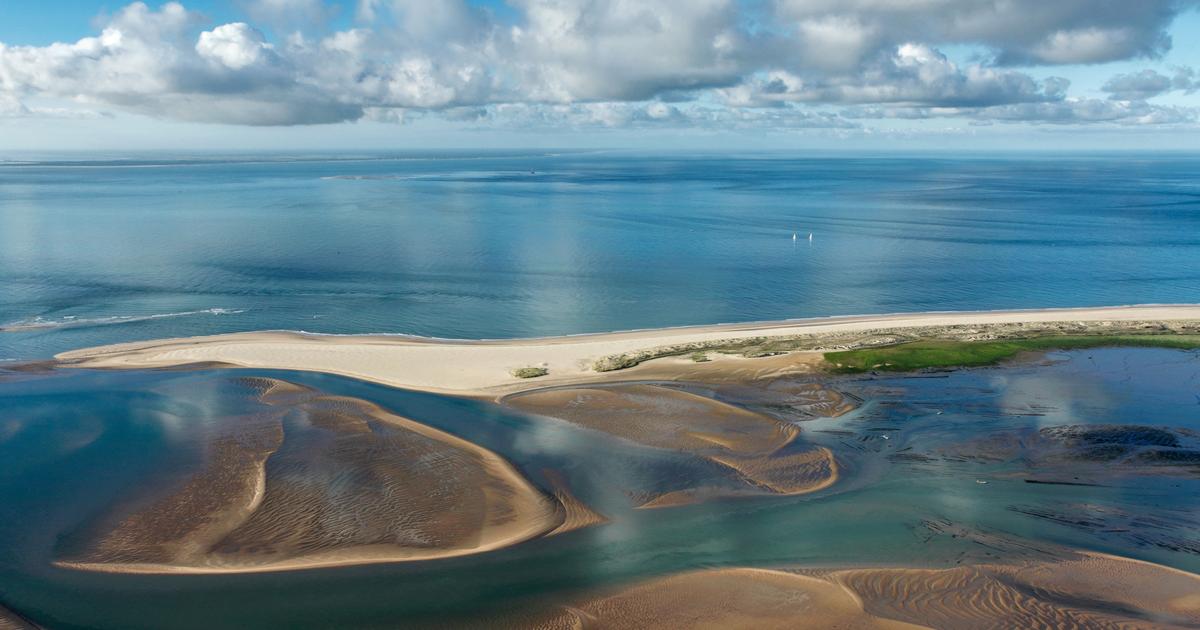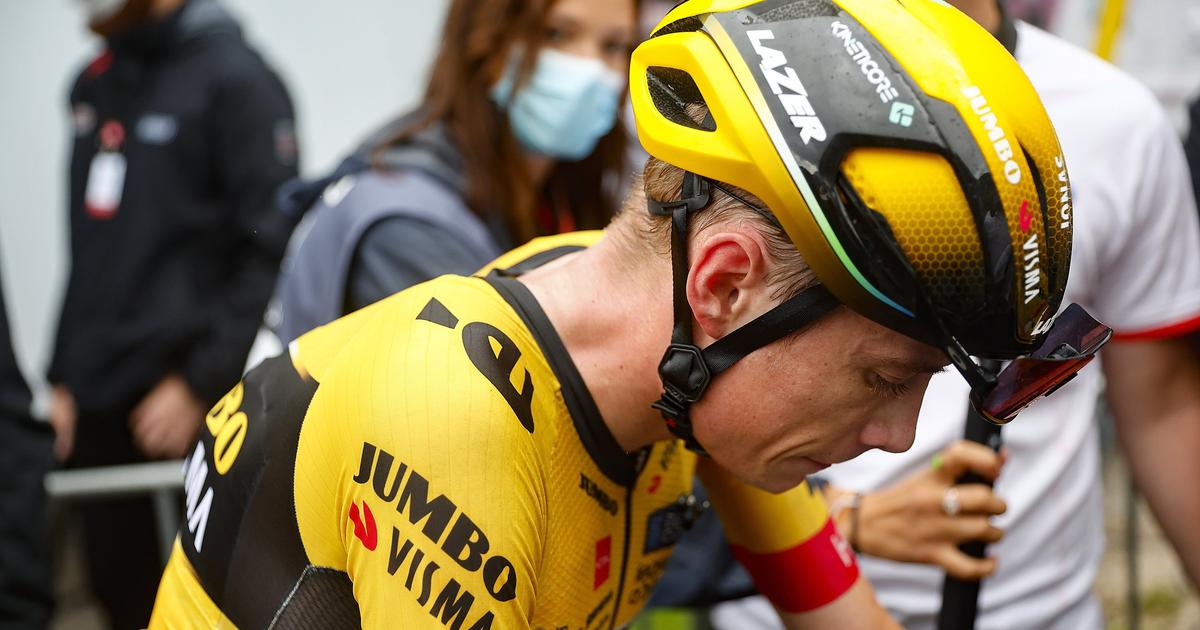Curled against the French border,
La Panne
is the first seaside resort on the Belgian coast.
You are welcomed there by a monumental statue of Leopold, elected first King of the Belgians by the Congress of the new Kingdom of Belgium.
Because it is there that this German prince, widower of the Crown Princess of England, first set foot on national soil in July 1831. La Panne is a family beach, mainly French-speaking.
On Saturday morning, back from the market, we settle down on one of the many terraces on the sea wall to have a beer, shrimp croquettes or a sugar waffle with a view of the colorful beach cabins set up for the summer. .
It's hard to resist the urge to take a ride in a Cuistax, this funny pedal machine, typical of the Belgian coast.
Behind the building bars of the dyke,
La Panne has preserved an entire classified district, witness to the beginnings of tourism.
The Quartier Dumont is worth a stroll, among the cottage-style houses built in the dunes at the turn of the year 1900.
De Panne tourist office
: tourisme.depanne.be.
From one dune to another
Assaulting the highest dune in Belgium at Koksijde.
Tourism Koksijde: Westoer
Next
is St. Idesbald
.
It is in this small fishing village that Paul Delvaux, one of the main Belgian surrealist painters, spent a good part of his life.
His small white house has been transformed into an astonishing museum of more than 1000 m2, which brings together the largest collection in the world of the artist.
We follow him in his fantasies... Saint-Idesbald is in reality only a hamlet of
Coxyde
, the next track.
It offers the largest surf area on the coast.
There is also the highest dune in Belgium.
In this magical site was once erected one of the main abbeys of the county of Flanders.
Over the centuries, sand encroachment and vandals got the better of the Dunes Abbey.
But its remains can be visited, and all you have to do is put on virtual reality glasses to be catapulted back to 1490, at the time of the place's splendor.
The fishermen on horseback from Oostduinkerke.
Dirk Van Hove / Gemeente Koksijde
A dune further on is
Oostduinkerke
.
This other hamlet of Koksijde is best known for its fishermen on horseback.
With their yellow raincoats and woven baskets, you will see them fishing for small North Sea gray shrimp at low tide.
This ancestral tradition is included in the Intangible Cultural Heritage of UNESCO.
Today, fishermen on horseback most often go out for the pleasure of tourists, who can then watch the shrimp being cooked on the seawall.
In the time before
The booms at the mouth of the Yser at Nieuport.
Visitflanders / Kris Jacobs
Nieuport
is popular with yachtsmen.
Its port, which can accommodate more than 2,000 yachts, is among the largest in Europe.
The city is located on the Yser estuary.
The booms installed on either side of the mouth, and which extend far into the sea, remain one of the most popular promenades on the coast.
Nieuport was completely destroyed during the Battle of the Yser in World War I.
If the old town displays a medieval Gothic style, it was rebuilt in the 1920s. The monument to King Albert I bears witness to this era.
From its roof terrace, you will enjoy a breathtaking view of the city and the plain of the Yser.
Beneath the monument, the Westfront Museum tells how the plain was flooded in the
A few months earlier, carefree tourists were still strolling on
Westende
beach .
The Grand Hôtel Bellevue, with its rotunda, is emblematic of the time.
A few streets further on, push open the Porte des Zéphyrs.
Built in 1910, this villa was fitted out by Henry van de Velde, who was one of the founders of Art Nouveau in Belgium, before leaving to lay the foundations of the Bauhaus in Weimar.
Restored in the original style, the villa invites you to discover what life was like for a family on holiday by the sea at the beginning of the 20th century.
The statues of Cédric and a few other comic book heroes punctuate the promenade on the Middelkerke dyke.
Westtoer
Complete this discovery with a visit to Kusthistories in
Middelkerke
.
Installed in the old post office, this museum is devoted to seaside tourism.
Leaf through the history of swimsuits and dive back into the years when little girls made crepe paper flowers while boys played jokari on the seawall.
Today, the Middelkerke dyke hosts statues of comic book heroes.
Everyone can afford a souvenir photo with Lucky Luke or Smurfette.
Ostend, the queen of beaches
The Royal Galleries and the Thermae Palace in Ostend.
Visit Oostende / Arne Deboosere
Ostend
is nicknamed "the queen of the beaches" because it was very popular with the royal family for a long time.
The story begins with Louise-Marie d'Orléans, who became the first queen of the Belgians through her marriage to Leopold I in 1832. Preferring Ostend to Brussels, she drew all the nobility of her time in her wake.
His son, Leopold II, then undertook major works in the nascent seaside town.
Witness the Royal Galleries, designed by the French architect Charles Giraud.
400 meters long, they protected nobles and bourgeois from the rain and the sun during their walks by the sea. The Palais des Thermes, now transformed into a hotel, also dates from the Belle Époque.
The Sand City sand sculpture festival.
Sand City/Press Photo
Ostend is also known for its artists.
In the forefront of which are James Ensor, whose recently renovated house we visit.
The Mu.ZEE also offers a collection of Belgian art from 1850 to the present day.
That said, you don't need to go to the museum to get a kick out of it.
Thanks to The Crystal Ship, one of the most important street art festivals in Europe, Ostend gets a few new frescoes every year that turn the city into an open-air art gallery.
During the summer, Ostend also hosts Sand City, listed in the
Guinness Book of Records
as the largest sand sculpture festival in the world.
Between bunkers and wind turbines
The Atlanticwall brings together a series of vestiges among the best preserved of the Atlantic Wall.
Westtoer
Before Ostend, you will perceive the royal imprint in the hamlet of
Raversijde
.
The Atlanticwall brings together a series of vestiges among the best preserved of the Atlantic Wall: around sixty bunkers, observation posts, underground passages... Prince Charles, regent of the Kingdom between 1944 and 1950, has always opposed to their demolition.
He himself lived for about thirty years on the site.
The locality of Le Coq has kept its Belle Époque character.
Tourism Wenduine / De Haan
After Ostend, we arrive at
Bredene
, a resort especially famous for its nudist beach.
Then there is
Le Coq
, imagined by Léopold II on the model of the Ville d'Hiver of Arcachon.
Thanks to strict urban planning requirements, Le Coq has been able to preserve its Belle Époque character.
It is the only resort on the Belgian coast not to have been invaded by concrete.
he Pier is the emblematic monument of the city of Blankenberghe.
Belgium Pier
Blankenberghe
, its neighbour, displays a completely different style.
Very popular and busy, it is known for its “Pier”.
At the end of this long pier which is part of the national heritage, a brasserie on stilts welcomes you to enjoy the sea at 360 degrees.
Little is said about the next station:
Zeebrugge
, which is none other than the port of Bruges.
The area is mainly industrial.
However, it is in Zeebrugge that you will enjoy the largest and quietest of the beaches on the coast.
On the horizon, we see tankers and container ships, but also about forty offshore wind turbines.
This wind farm can be visited during boat trips.
Read also48 hours in Bruges: romantic getaway in the Venice of the North
A breath of fresh air
The Zwin is Belgium's first nature reserve.
Visitflanders
The last resort on the Belgian coast is the best known and the most exclusive:
Knokke
.
Families like to get together in the Zoute district or Albert-Plage.
They own an Anglo-Norman style villa or stay in a fine hotel before meeting at the casino, the Royal Zoute Golf Club or in one of the
flagship
stores in the city centre.
Knokke has dozens of art galleries and no less than 200 restaurants, including twenty Michelin.
But alongside this very urban life, Knokke is also home to the Zwin.
Belgium's first nature reserve was recently extended to offer 770 hectares of mudflats and salt meadows for migrating birds.
On foot or by bike, the
Zwin ride
reminds us that we first come to the sea to take a breath of fresh air.
Read alsoBetween beaches and dunes, head to the Zwin Nature Park, pearl of the Belgian coast
GO
La Panne is 20 km from Dunkirk and 80 km from Lille.
To reach the Belgian coast by train, take a
Thalys
to Brussels, then a direct train to Ostend or Blankenberghe (allow 1h15 through the Flemish countryside).
On site, take the Tram du Littoral.
It is said that it is the longest tram line in the world!
Since 1885, the Kust Tram has linked 16 seaside resorts in 70 stops between the sea and the dunes.
At his own pace, in 2h20.
TOURIST OFFICES
lelittoral.be, visitflanders.com
[Originally published in August 2020, this article has been updated.
]








